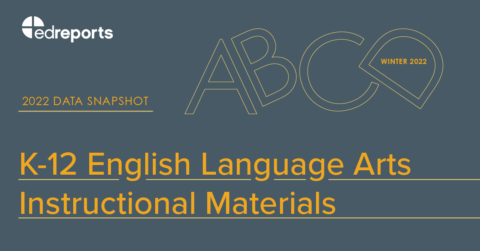Data Snapshot: K-12 Science Instructional Materials (2022)
Learn more about the availability and use of high quality K-12 science curriculum in this new report.
Related Resources
article
Data Snapshot: K-12 Science Instructional Materials
Learn more about the availability and use of K-12 science curriculum in this new report.
article
Data Snapshot: K-12 English Language Arts Instructional Materials
Learn more about the availability and use of high quality K-12 ELA curriculum in this new report.
article
Data Snapshot: K-12 Mathematics Instructional Materials
Learn more about the availability and use of high quality K-12 mathematics curriculum in this new report.


